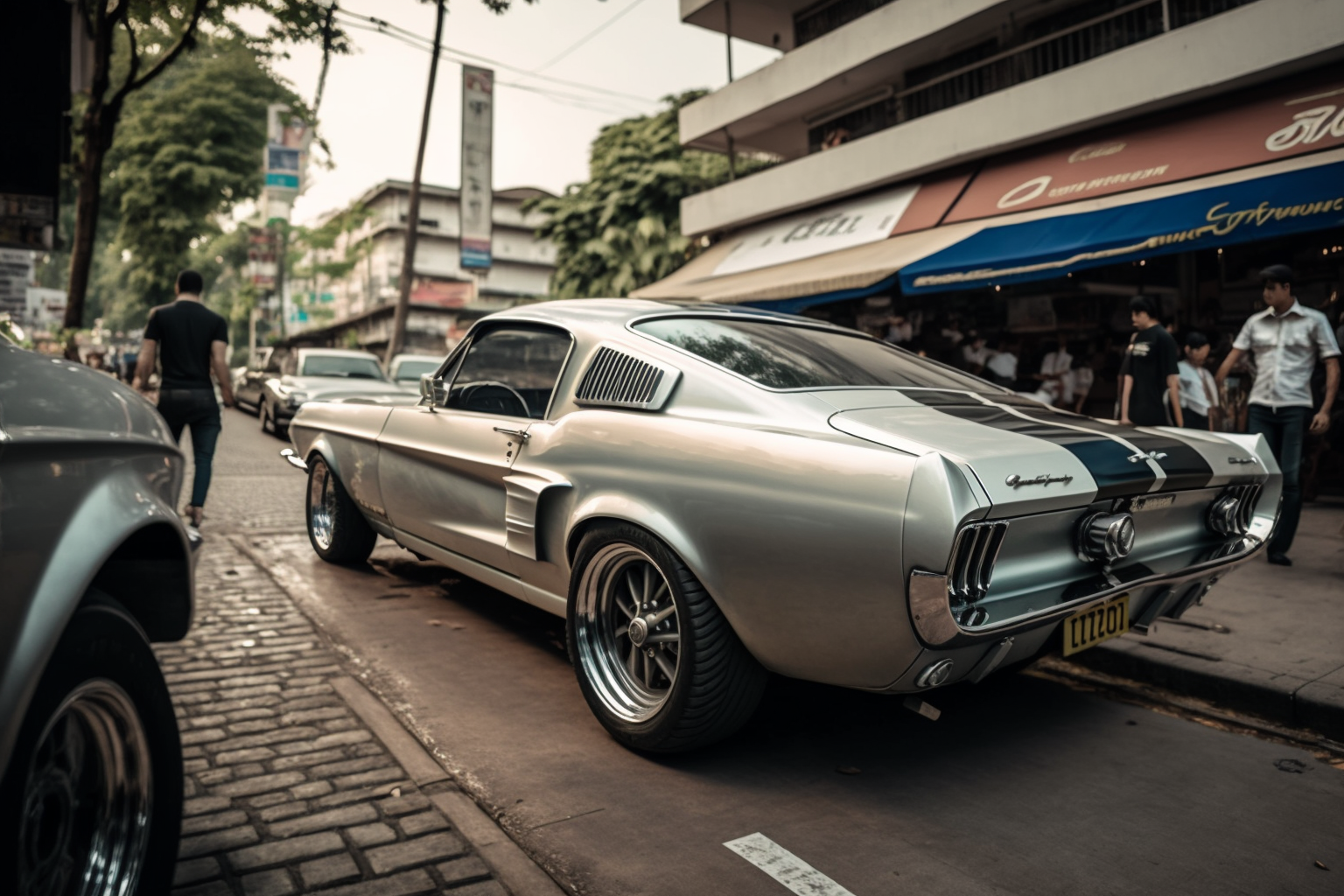Karkrub Review
Specs of the Car:
The 1967 Ford Mustang 4.7 Coupe AT, commonly referred to by its engine displacement as the “289” (cubic inches), was powered by a 4.7-liter V8 engine that could produce 225 horsepower when equipped with the two-barrel carburetor, and up to 271 horsepower with the four-barrel option. The car featured a three-speed automatic transmission, disc brakes in the front, and drum brakes in the rear. Its wheelbase was 108 inches, and it boasted a redesigned grille, a larger body, and an enhanced interior compared to its predecessors.
History of the Model:
The Ford Mustang, first introduced in 1964, was Ford’s answer to the growing demand for compact, affordable sports cars, often termed the “pony car” segment. By 1967, the Mustang had already achieved iconic status. The ’67 model marked the first major redesign, with Ford targeting both enhanced performance and luxury. This was a pivotal year in Mustang’s history as competition was intensifying, especially from Chevrolet’s newly introduced Camaro.
Development of the Model:
The 1967 redesign addressed many of the shortcomings of the earlier models. Designers aimed to make the car look more aggressive while also accommodating bigger engines. As a result, the ’67 Mustang was larger in nearly every dimension. The grille was more pronounced, and the side scoop design was more pronounced. Inside, the cabin got a boost in luxury with the introduction of a new tilt-away steering wheel and updated dashboard. Ford also made several safety improvements, such as a dual-circuit brake master cylinder and energy-absorbing steering column.
Journalist Reviews at the Time of Release:
When released, the 1967 Ford Mustang 4.7 Coupe AT received generally positive reviews from automotive journalists. They praised its refined design, with many noting that the larger dimensions allowed for a more spacious and comfortable interior. The power from the 4.7-liter V8 engine, especially in the higher-spec four-barrel variant, was lauded for providing spirited performance. However, some critiques centered on the car’s handling and weight, indicating that it had lost some of the nimbleness of the earlier models. Nevertheless, the Mustang’s blend of style, power, and affordability solidified its place as one of America’s favorite sports cars.
Types of Modifications Typically Done:
The 1967 Mustang, like many classic cars, became a favorite among enthusiasts for modifications. Typical modifications included:
- Engine Swaps: While the 4.7L V8 was powerful, many sought more grunt and thus opted for larger engines from Ford’s lineup, like the 390 and 428.
- Suspension Upgrades: To address handling critiques, many added stiffer springs, modern shock absorbers, and sometimes even coil-over setups to enhance the Mustang’s cornering abilities.
- Brake Upgrades: Disc brake conversions for the rear became popular to improve the braking performance.
- Cosmetic Modifications: Many owners added hood scoops, aftermarket wheels, racing stripes, and other aesthetic touches to personalize their Mustangs.
- Interior Enhancements: Modern sound systems, leather upholstery, and updated dash components were common additions.
In conclusion, the 1967 Ford Mustang 4.7 Coupe AT was a significant milestone in the evolution of the Mustang brand. Its blend of performance, design, and luxury made it an instant classic, and its legacy continues to influence automotive design and culture today.
Karkrub score : 1967 Ford Mustang 4.7 Coupe
Design: 9/10
The 1967 Ford Mustang’s design is one of the most iconic in automotive history. The year marked the first major redesign, with a more pronounced grille, distinctive side scoops, and a larger, more aggressive stance. Its aesthetic appeal transcends time, capturing both the spirit of the ’60s and the essence of the pony car segment.
Power: 8/10
The 4.7-liter V8, known as the “289,” offered respectable power outputs ranging from 225 horsepower with a two-barrel carburetor to 271 horsepower with a four-barrel setup. While these figures were competitive at the time, they were overshadowed by some of the bigger engine options available in the Mustang lineup.
Fun: 8.5/10
The Mustang has always been about the joy of driving. With its V8 rumble, rear-wheel-drive layout, and the ability to go fast in a straight line, the ’67 Mustang offered thrills aplenty. However, when compared to modern sports cars or even some contemporaries, its cornering ability left a bit to be desired.
Comfort: 7.5/10
For 1967, the Mustang grew in size, which translated to a more spacious and comfortable interior. The new tilt-away steering wheel and refined dashboard enhanced the driving experience. Still, by modern standards, or when compared to luxury cars of its era, the Mustang was more sporty than plush.
Reliability: 7/10
By today’s standards, the 1967 Mustang might seem less reliable, primarily because of its age and the technology of its time. However, for its era, the Mustang was relatively dependable, especially if well-maintained. Parts were abundant and easy to replace, but some mechanical quirks could arise.
Safety: 6/10
Safety norms in the 1960s were far from what they are today. Though the 1967 model did introduce some safety features like a dual-circuit brake master cylinder and an energy-absorbing steering column, it lacked many modern safety essentials. No airbags, limited crumple zones, and the absence of advanced safety tech put it at a disadvantage in this category.
Value: 9/10
When assessing value, one has to consider both the initial cost and the long-term investment. The Mustang was introduced as an affordable sports car, and the 1967 model continued that legacy. Today, its iconic status, combined with the growing interest in classic cars, has made the ’67 Mustang a sought-after collectible, often appreciating in value.
Average Score: 7.9/10
In summary, the 1967 Ford Mustang 4.7 Coupe AT stands as a testament to a bygone era of automotive design and performance. Its iconic design, combined with its V8 power and the sheer fun of driving it, makes it a legend in the automotive world. While it might not measure up to modern standards of comfort, reliability, and especially safety, its enduring value both as a driving machine and a collectible ensures its place in automotive history.

Leave a Reply